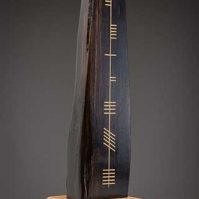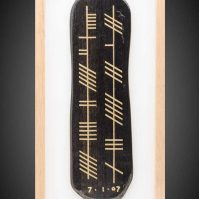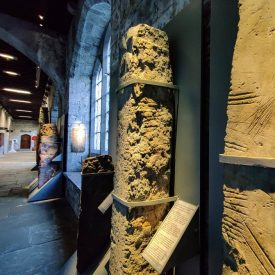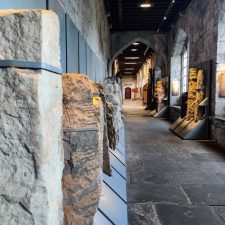
History of Ogham
Ogham writing is the earliest known form of written Irish. The alphabet pre dates the 5th century. It’s consists of an alphabet of twenty letters used for stone and wood inscriptions in Celtic Ireland. The letters consists of one to five perpendicular or angled strokes meeting or crossing a centre line. The form of the letters allows them to be carved easily on objects of wood and stone. Ogham was carved and read from bottom to top.
Ogham is sometimes referred to as the Celtic Tree Language as each letter was named after a tree the people were familiar with, and used. Ogham inscriptions consist almost exclusively of personal names and marks, possibly indication land ownership, though some appear to be memorials to the dead.
Any wood Ogham inscriptions have, of course, long vanished. However, there are roughly 400 Ogham inscriptions in stone found to date of which 330 are from Ireland. The other Ogham stones have been found in England, Scotland, Wales, Isle of Man and Shetland.
The Irish had no other written alphabet until Christian missionaries introduced Latin. Ogham ceased to be used after the first few centuries of the Christian Era, as the use of inscription language was reviled as a pagan practice.
Celtic Bogwoods & Ogham
At Celtic Bogwoods we connect the historical writing of Ogham with beautifully handcrafted bogwood to b=bring our customers a unique and beautiful creations to mark all important moments in their lives.




The Stone Corridor
Stone Corridor, UCC “represents the largest collection of Ogham inscriptions on open display in Ireland”. The Ogham which can be viewed for free, is part of an exhibition titled “Stories in Stone” and shows pieces of the physical evidence of the earliest Irish language and scholarship on records.


Ogham Stone Corridor UCC.

